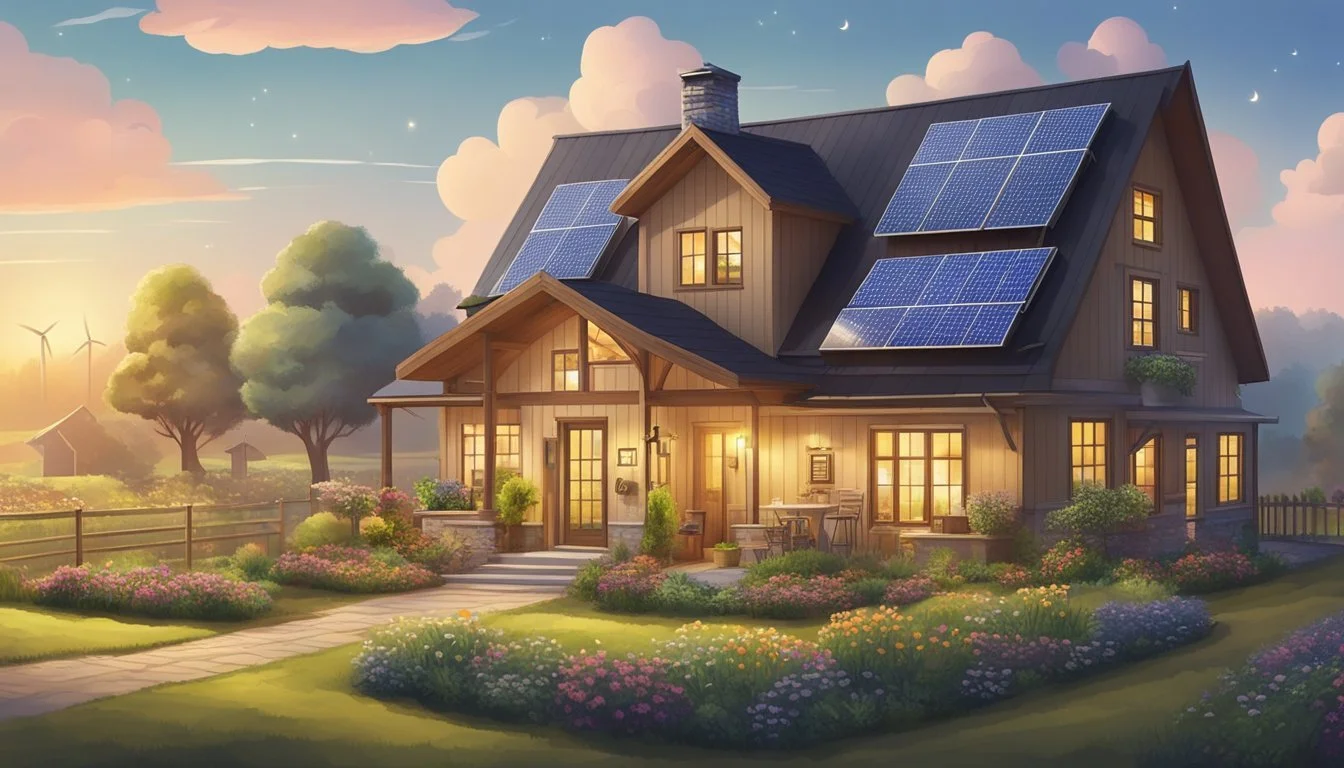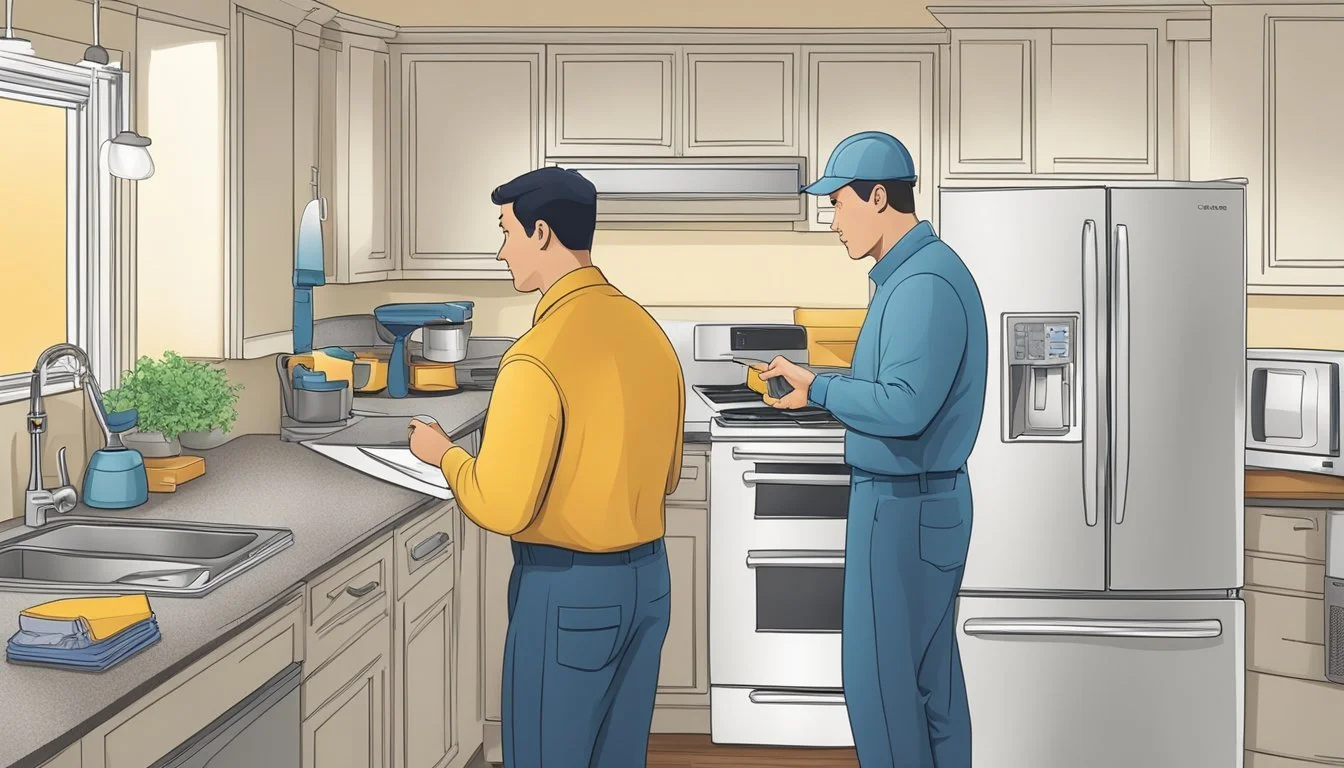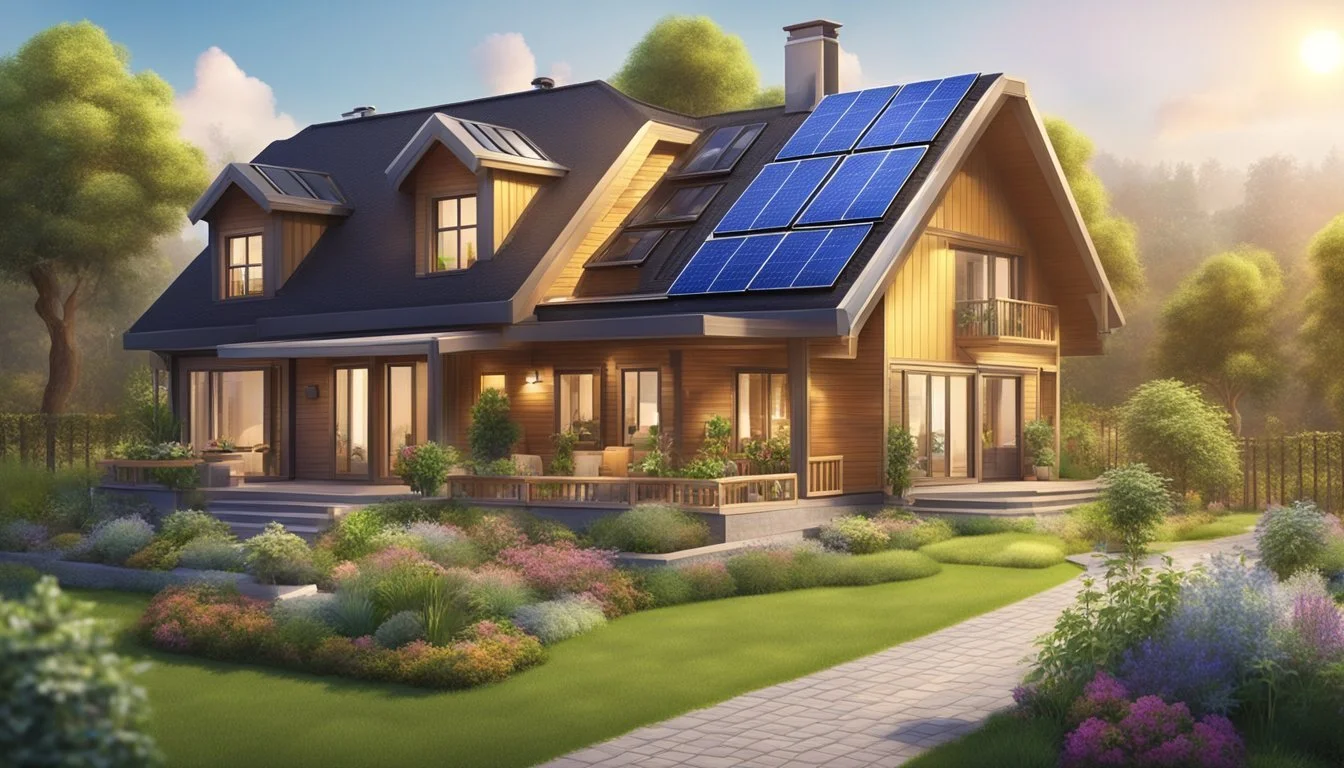Homestead Energy Efficiency Tips
Maximizing Sustainability with Simple Changes
Energy efficiency on a homestead is not only environmentally prudent but also economically wise. Reducing the energy consumption in the home lessens the ecological footprint and can significantly lower utility costs. Improved energy efficiency involves smart usage of energy resources, careful consideration of energy practices, and sometimes adopting new technologies designed for energy conservation.
Homesteaders have numerous options when it comes to making their homes more energy-efficient. Installing modern, energy-saving appliances or upgrading to insulated windows are effective ways to cut costs. Smaller, everyday actions, like washing clothes in cold water, also contribute to a home's overall energy savings.
Additionally, integrating alternative energy sources is an excellent approach for homesteaders aiming for energy independence and sustainability. Investing in biofuels or solar panels can reduce reliance on traditional energy grids. Being energy-efficient is a dynamic, ongoing process; it's as much about the big investments as it is about the little everyday habits that accumulate over time to create a significant impact.
Assessing Current Energy Usage
Understanding the current energy usage is the first step towards making a homestead more energy efficient. This requires a methodical approach to identify areas where energy consumption is high or being wasted.
Energy Audits
An energy audit is a comprehensive evaluation of a home's energy efficiency. During an audit, professionals examine areas like insulation, heating and cooling systems, and windows to ascertain energy consumption patterns. According to the Department of Energy, an audit can also discover safety issues, helping prioritize necessary changes to reduce energy waste.
Monitoring Electronics
Monitoring home electronics contributes significantly to controlling energy usage. Small changes, such as unplugging devices when not in use or employing smart power strips, can reduce the "phantom load" — the energy consumed by electronics when they are turned off but still plugged in. A systematic approach to monitoring can help homeowners become aware of how much energy their electronic devices consume, even when they are not actively in use.
Optimizing Heating and Cooling
Optimizing home heating and cooling systems is essential for maintaining a comfortable living environment while conserving energy. Key strategies include the installation of smart thermostats, improving insulation, sealing leaks, and utilizing ceiling fans to enhance efficiency.
Smart Thermostat Installation
Smart thermostats are a pivotal tool in managing home temperatures efficiently. They automate temperature control, learning the homeowner's schedule and adjusting heating and cooling for when the residence is occupied or vacant, ensuring that energy is not wasted. Use a Programmable Thermostat Properly to gain the maximum benefits from these devices.
Enhancing Insulation
Insulation acts as a barrier to heat flow and is crucial to keeping a home warm in the winter and cool in the summer. It is particularly critical in the attic and walls, where inadequate insulation can lead to significant energy losses. Upgrading insulation ensures that space heating and cooling efforts are not in vain, leading to a direct impact on energy bills and comfort.
Sealing Leaks
Leaks in a home's envelope — such as around windows, doors, and ductwork — can undermine HVAC efficiency. Air sealing these leaks is one of the most cost-effective methods to save energy and enhance the overall efficiency of the heating and cooling system. Proper use of sealants can also significantly reduce drafts and cold spots within a home. Sealing and insulating ducts can improve system efficiency dramatically.
Using Ceiling Fans
Ceiling fans complement HVAC systems by circulating air to create a more even temperature throughout the room. In the summer, fans should rotate counterclockwise to push cool air down, while in the winter, the blades should be set to rotate clockwise to help pull up cold air and circulate warm air that has risen to the ceiling. Fans allow homeowners to raise or lower their thermostats a few degrees, resulting in energy savings without sacrificing comfort.
Water Heating Efficiency
Water heating can account for a significant portion of a homestead's energy consumption. Making informed decisions regarding water heating systems and usage practices can lead to substantial energy savings and reduced expenses.
Tankless Water Heaters
Tankless water heaters, also known as on-demand water heaters, provide hot water only as it is needed, eliminating the need for a storage tank. This feature can lead to energy savings, as tankless water heaters avoid the standby heat losses associated with traditional storage water heaters. According to the Department of Energy, homes that use less than 41 gallons of hot water daily may benefit from energy savings of 24% to 34% compared to traditional tank models. For homes that use more water—around 86 gallons per day—energy savings of 8% to 14% can still be achieved.
Cold Water Usage
The incorporation of cold water usage in everyday tasks can contribute to energy conservation. Washing clothes in cold water and opting for cold water in dishwashers can markedly save energy. ENERGY STAR-qualified appliances bolster these efforts by ensuring the highest efficiency during usage. By minimizing the demand for heated water, these simple adjustments can conserve energy and save money on utility bills. Users should also be aware that reducing hot water use has additional benefits such as cutting down on water waste and lessening strain on septic systems or sewage treatment plants.
Electrical Appliances and Lighting
When it comes to homestead energy efficiency, selecting the right electrical appliances and upgrading lighting can significantly reduce electricity costs while conserving energy. Focusing on energy-efficient appliances, LED lighting, and smart power strips will ensure sustainable energy consumption and long-term savings.
Energy-Efficient Appliances
Choosing appliances with an ENERGY STAR certification is crucial for energy savings. Energy-efficient appliances not only consume less electricity but also reduce the utility bills over time. In contrast, old appliances typically use more energy, leading to higher costs. It's important to consider the appliance's energy consumption before purchasing to ensure it aligns with efficiency goals.
LED Lighting
Switching to LED light bulbs is an immediate step towards reducing lighting costs. LED bulbs are vastly more energy-efficient than traditional incandescent bulbs, using up to 75% less energy and lasting 25 times longer. A household can save more than $200 a year by opting for LEDs, which also translates into fewer bulb replacements over time.
Smart Power Strips
Smart power strips can help eliminate energy waste from appliances that draw power even when turned off, known as standby power. These power strips can intelligently cut off the power supply to devices that are not in use, which can contribute to substantial savings on the electricity bill. Investing in smart power strips is a small change that can lead to more efficient energy use throughout a homestead.
Windows, Doors, and Skylights
Enhancing the energy efficiency of windows, doors, and skylights is essential for a homestead aiming to reduce energy bills and increase comfort. Double-glazing, low-emissive coatings, and proper sealing are specific technologies that can significantly improve performance.
Double-Glazing
Double-glazed windows consist of two panes of glass with a space in between, typically filled with an inert gas like argon. This design creates a thermal barrier that reduces heat loss, thereby helping homesteads to save energy. It is evident from research that double-glazing can lower energy consumption for heating and cooling by roughly 30 percent.
Low-Emissive Coatings
Low-E (Low-Emissive) coatings are applied to the glass and are designed to reflect infrared light, keeping heat inside during the winter and outside during the summer. This technology is especially effective in skylights, as it can reduce the solar heat gain while still allowing for ample natural light.
Proper Sealing
Ensuring that windows, doors, and skylights are properly sealed eliminates drafts and prevents heat from escaping or entering a homestead. Weatherstripping and caulking are two common sealing methods used to improve energy efficiency. A properly sealed home can markedly reduce energy consumption and improve the overall comfort of the living space.
Renewable Energy Integration
Integrating renewable energy into a homestead can significantly increase energy efficiency and reduce carbon footprints. Through methods like solar panel installations and passive solar design, homeowners can harness clean energy, save money, and contribute to a sustainable future.
Solar Panel Installation
Solar panels are a cornerstone of renewable energy for any homestead. When considering installation, it’s crucial to assess the property's solar potential to determine the most effective placement. A professional assessment maximizes exposure to sunlight, thereby optimizing the energy efficiency. It is not uncommon for a carefully designed solar panel system to generate more power than the home uses, potentially allowing homeowners to sell excess energy back to the grid.
Benefits of Solar Panels:
Reduces electricity bills
Decreases carbon footprint
Offers potential tax incentives
Considerations:
Roof’s structural integrity
Local weather patterns
Passive Solar Design
Passive solar design takes advantage of a building’s site, climate, and materials to minimize energy use. Strategically placed windows, thermal mass construction materials, and proper insulation allow homes to harness the sun’s energy for passive solar heating. This design method not only cuts down on heating costs but also contributes to a comfortable living environment throughout the year.
Key Elements of Passive Solar Design:
South-facing windows that capture sunlight
Thermal mass, like concrete or brick, that stores and distributes heat
Overhangs or shutters to provide shade in summer months
By implementing these renewable energy strategies, homeowners convert their living spaces into models of efficiency and sustainability.
Best Practices for Homeowners
To enhance energy efficiency and reduce utility costs, homeowners can adopt several straightforward strategies. Focusing on natural light, optimizing laundry habits, and conserving energy in the kitchen are critical areas where simple changes can lead to significant savings.
Utilizing Natural Light
Homeowners should maximize the use of natural light within their homes to cut down on electricity usage. By strategically opening curtains and blinds during the day, especially on south-facing windows, they can take advantage of free illumination and warmth from the sun. For an additional touch, placing mirrors opposite windows can help reflect and disperse light throughout the room.
Laundry Habits
Improving laundry habits is a practical approach to save energy. Homeowners are advised to wait until they have a full load before running the washing machine, which reduces the number of wash cycles needed per week. Using cold water for washing can significantly lower energy usage, as most of the energy in a wash cycle goes to heating the water. Moreover, air-drying clothes when possible further decreases the reliance on energy-intensive dryers.
Kitchen Energy Conservation
The kitchen offers ample opportunities for energy conservation. Simple behaviors like using lids on pots to quicken cooking and thus reduce energy, and choosing the right size burner for pans are effective. Homeowners should also keep their refrigerator and freezer well-organized to prevent energy waste through prolonged searching and minimize the time the doors are open. Regular maintenance, such as cleaning the refrigerator coils, ensures appliances operate at peak efficiency, a critical step to improve energy efficiency in the home.
Conclusion
Adopting energy-efficient practices allows homeowners to significantly reduce energy consumption while maintaining a comfortable living environment. They can conserve energy by investing in alternative fuels and tankless water heaters, which, respectively, offer a more sustainable energy source and lower operational costs.
Homeowners should consider running the numbers with a local energy audit to pinpoint their specific energy uses. The audit outcomes can guide well-informed decisions on which energy-saving measures to implement, as suggested by WIRED.
A comprehensive approach to energy efficiency is not only practical but also provides a sense of achievement and responsibility towards a sustainable future. Here are key takeaways:
Assess Energy Use: Strategically evaluate where and how energy is used at home.
Invest Wisely: Prioritize in long-term savings with efficient appliances.
Insulate and Seal: Keep the home properly insulated to sustain a comfortable temperature.
Embrace Renewables: Consider renewable energy options for long-term efficiency gains.
The Energy Saver Guide offers practical tips that can contribute to a more efficient and money-saving household. By following these guidelines, residents take an active role in energy conservation and can enjoy both a comfortable and efficient home.





